Asthma. Fortunately I’ve never had it. I was STUNNED to find out our four year old has “respiratory airway disease” which, to me, is the equivalent of childhood asthma — something she will hopefully outgrow. At the time my child had at least five belts in karate and NEVER complained she couldn’t breathe. It was absolutely unnerving. Then my husband of almost nine years calmly said, “Oh yeah, I had that as a kid but I grew out of it.” And I just sat in this doctor’s office with my eyes bulging from their sockets trying to digest it all. I didn’t really know about inhalers and I had certainly had never heard of a nebulizer. It was like my world had been turned upside down and I was having to learn a foreign language. HOW could my child POSSIBLY have this when she never said ONE WORD about not being able to breathe?? It was so serious the doctor very nearly told us we could not take our spring vacation! So I am now acquainted with Nasonex, Singulair, and Zyrtec in addition to the two vials of liquid I mix in her breathing machine twice a day. When we started off we had a mask that my brave girl just freaked out over. She never flinched at a blood draw, going under during an endoscopy and colonoscopy, ALL the horrible prep work that goes into that, or having shots. But I think I can understand this as I am claustrophobic as well. The “pipe” isn’t supposed to be used until five or older but thank heaven they let her try it and we were able to switch! Now she falls asleep with it in her mouth. I have often looked at my little one and wondered what my pipe smoking great grandmother would have thought. Of course the two are completely disparate. The great English playwright William Shakespeare said, “Love is a smoke made with the fume of sighs.” With a sigh I pray that she will outgrow this just as my husband, her daddy, did. In the meantime, at least she has her pipe.
Client Communiques
I have owned and operated a petsitting business for 16 years now. It has brought me a tremendous amount of joy and, I confess, has sometimes been very, very stressful. Growing up everyone said with my love of animals I should be a vet. I knew I didn’t have the stomach for it and I was already seriously writing way back then. Achieving my degree from SMU with a degree in journalism left me floundering between print and broadcast. I never wanted to be on TV, but I felt print was on its way out — even as early as the mid ’90’s. So I stumbled into petsitting which allowed me freedom, the ability to stay close to my recently widowed mother, and I was doing something I loved independently. I have received many, many notes from clients over the years. Some leave detailed instructions, some say NOT to call because they’ll assume something is wrong, etc. But I wanted to post a picture of this note because it made me laugh. It doesn’t seem like much but it is such a tremendous responsibility to care for someone’s beloved pets in addition to their home. Combine crammed schedules, medicines, special feeding regimens, and the dreaded alarm codes and it proves to be a lot. When I was single I took my mother around and, especially during the holidays, it gave us places to be when we had none. I remember looking into other people’s shiny, happy homes as we drove by and wishing it were more than just the two of us. Now I am married and have a child of my own. I have written before she is my very best helper and she has said that she wants to be “a doctor for animals”. She is just 4 1/2 and has the whole wide world ahead of her. But of one thing I am certain: my daughter will always have an innate love for all animals. The French novelist Colette once said, “Our perfect companions never have fewer than four feet.” Poochas gracias and meowci for allowing me into your homes to care for your beloved companions.
History, Holiness, And Mystery
This was our last day in Antigua and I was somewhat sad to go home. The hotel itself was a sheltered haven from the outside world. I found myself looking forward to each evening as the myriad of lit candles lent the place an air filled with history, holiness and mystery. My favorite was the hotel’s religious history. As if the place could not get any better, it houses several museums. The Colonial Museum contains works produced during the 16th, 17th, and 18th centuries into the beginning of the 19th century. Among the displays are religious paintings, wooden sculptures in the form of angels, saints, and more and also silver pieces such as lecterns, chalices, and monstrances. My second favorite was their Archeology Museum. It contains an ancient treasure trove of ceramic and stone objects in the form of vessels, thuribles, and other ceremonial items found from the Classic Period of the Mayan Culture, from 200 to 900 AD. An oft overlooked small Pharmacy Museum was fascinating, with porcelain, glass, marble, and bronze pieces that were once part of private collections and of course were used to store medicinal products. Once again I will confess I absolutely detest modern art, so I cannot write anything about the contemporary “artist” halls other than I found them incongruous — much like I. M. Pei’s glass pyramid that decimates the old beauty of the Louvre. Fortunately my husband feels the same way so we did not spend any time on it. Lastly, we visited their Silver Museum which contains samples of the Sacatepequez arts and old handcrafted traditions of the region’s people. The picture I chose is a simple one. But it is how the whole place looked every night; old stone basins full of rose petals in water that glistened from the candlelight. American Pulitzer Prize-winning novelist Edith Wharton once said:
“There are two ways of spreading light: to be the candle or the mirror that reflects it.”
Antiqua, Guatemala for me was both.
The Eyes Have It
Most of all the thing that struck me about Guatemala was the people. I may have read a similar sentiment somewhere about somplace before and I remember thinking it was trite. But for me, in this country, it was true. In my past travel experience I have encountered half-hearted welcome, apathy, and animosity — even right within my own borders. What struck me most about the Guatemalans was a genuineness that simply cannot be feigned. They carried no animosity and it showed in their gentle, smiling eyes. The beautiful little girl pictured here shyly presented her mother’s craftsmanship and I am quite sure she knew she’d melted my heart. I asked if I could please take her picture and, smiling proudly, her mother said yes. They both seemed surprised when I pressed some quetzals into her tiny little hands as a thank you. This was another occasion where my resolution for us to carry cash would prove to be a good thing. There was also a young boy, perhaps nine, who asked if he could shine my husband’s shoes. Burk was wearing brown Cole Haans and blue jeans; not some business suit. I was sort of appalled because I remember black shoe shines from when I was a kid and knew they deserved better. My father always walked the road between two worlds being bi-racial and I witnessed it growing up; he was half German and half Choctaw. So here this little boy was looking up at my husband all hopeful in the parking lot and my heart cracked in two. We were so glad we had some money, but when Burk tried to just give it to him he vehemently shook his head “no”. Not understanding, my husband kept trying to put some money into his shirt pocket. The boy became more and more upset; to the point where tears were glistening in his eyes and threatening to spill over. And then, in that moment, I got it. I told the boy my husband’s shoes DEFINITELY needed a shine and could he please do so? Burk just looked at me somewhat agitated until he saw me begging with my eyes to keep quiet. The boy proudly set down to work on a little wooden planked stool, where he had my standing husband propped up on one foot. I just shrugged and told Burk in English to read his paper (ironically in Spanish) and so he did. And I watched that boy grow in stature as he vigorously rubbed my husband’s scruffy walking shoes until they actually looked presentable. I know Burk felt uncomfortable but the boy most definitely did NOT want a handout. He wanted to work and earn his money, which he most certainly did. When he had finally finished my husband handed him the quetzals and the boy accepted them with a nod. It was a nod of respect that hurt me coming from one so young. But I was so thankful from lessons learned on our previous trips — ALWAYS CARRY LOCAL CURRENCY! Canadian businessman Kevin O’Leary has said, “Money equals freedom.” I agree with him and it is my fervent hope that hard workers like this little boy and little girl will gain it. Achukma hoke.
God’s Handwriting
Every time we ventured out I could not help but notice the brightly painted walls and stunning vines of flowers that dripped gracefully down toward the cobblestones. Today we would make our way down to Antigua’s 5th Avenue to do a little shopping! I have read it is probably the best city in all of Central America for shopping and I can believe it. My sweet husband bought me a stunning mother of pearl choker in a high end jewelry store, and I am not known for changing my jewelry often. They had authentic jade there worth a fortune and I noticed there were more men with machine guns guarding the doors. The ancient Maya, Olmec, and Aztecs all treasured jade, more so than gold. Passing the fancy art galleries, we ambled our way toward the plaza. One could not help but notice the iconic yellow Santa Catalina Arch which allowed nuns to pass from the convent over the road below undisturbed, like a catwalk. A little past the Plaza Mayor, we devoted the rest of day to looking around the mercado municipal (public market) as well as a huge outdoor artisans’ area for all sorts of handcrafted goods. I love to bargain in foreign countries, but I refused to do so here. The amount of time, detail, and work these women put into their stitched textiles was mind-boggling. I felt I was taking advantage of them simply by paying their asking price; to have tried for less would have been immoral in my book. We got a beautiful purse for my mother which she loved and carried until the day she died. She was the envy of all who noticed it, so proud to have it, and I was embarrassed knowing it only cost something like $25. The entire bag was made completely by hand and the whole front was covered in intricately detailed, hand-stitched red flowers. The handles were strong and made of cloth and the inside even had a little zippered compartment. No shoddy craftsmanship here; it was literally a wealth of talent, time, care and creativity that went into the goods we saw. And no animals were slaughtered to make them! There were woven shawls and rugs, smocked clothing, bags and more completely stitched by hand. The national currency is the quetzal, named after the resplendent national bird of Guatemala. In ancient Mayan culture the bird’s long tail feathers were used as currency. I bought a large blue embroidered bag (primarily to bring back all my treasures) as well as two exquisitely detailed pillow shams each bearing three quetzals surrounded by flowers; one in dark blue and the other in vibrant orange. They live in our formal dining room on our banquette and every day I am reminded of Guatemala and its beauty each time I walk through our home. The famous 19th century American philosopher Ralph Waldo Emerson once said:
“Never lose an opportunity of seeing anything beautiful, for beauty is God’s handwriting.”
Churches, Cobblestones And Chicken Buses
If memory serves, this day we did a tour of the old city with lunch sandwiched in between (no pun intended). By 1773 Antigua was comprised of over 30 churches, 18 convents and monasteries, 15 hermitages, 10 chapels, five hospitals, and a university. It is no wonder Antigua, Guatemala has been called “the colonial jewel of the Americas”. Over the centuries the city kept rebuilding as it was repeatedly hit by earthquakes. In 1979 UNESCO declared it to be a World Cultural Heritage site. Restored colonial buildings resided next to those still left in ruins. It was a haunting mixture of time preserved and time stood still. Pictured here is my favorite — the Church of Saint Francis. No matter where I have traveled — a wolf, the Blessed Mother, or Saint Francis always finds me; either that or I am inexplicably drawn to where they are. Guatemala would prove to be no different. The 1717 earthquake damaged this church severely, as did the earthquake of 1751. It was partially destroyed in 1773 and was reconstructed some but areas of ruin still remained. Not surprisingly, this was my favorite church before I even knew it was Franciscan. At lunch I became enamored with Guatemala’s oldest continually produced beer dating back to 1896, a pale lager named Gallo (rooster). It is also the most famous beer in the country. I am not a huge beer fan and I loved it. On the subject of poultry, I had only seen chicken buses in the movies. The ones here were wildly colorful, intricately painted, and chromed old school buses. I learned it is the primary way in which locals transport between towns, villages, and cities in Central America. And I DID in fact see some chickens! I thought I saw a goat as well but I know for sure I saw them on the backs of trucks. Our guide was proudly Mayan and my husband and I could not get enough of his take on things like the Mayan calendar. After speaking with him at length we also discovered he humbly called himself a Medicine Man. I felt so lucky to have been able to ask him questions about his culture, as he did not volunteer his personal beliefs without prompting and noting our sincere interest. When I shared my Choctaw heritage with him he really opened up. He said they view the next cycle in the Mayan calendar as a time of great rebirth for the people; they are very hopeful. Scottish author Samuel Smiles once said:
“Hope is like the sun, which, as we journey toward it, casts the shadow of our burden behind us.”
As we ended the tour the rays of the sun lengthened our shadows on the old cobblestones, stretching far behind us, and I found myself praying he was right.
A Wedding In Ruins
This title is literal but not figurative. The wedding took place inside the cloistered walls of the Hotel Casa Santo Domingo. Pictured here is the open-air chapel of Our Lady of the Rosary, which is where the ceremony was held around sunset. Candles flickered everywhere and once again I had the feeling of ephemeral security. The beautiful chapel is in what I would call “working ruin” condition, which is part of what made it so unique. To me it served as a reminder that life is temporal, but faith in Jesus Christ is eternal. My handsome husband was a groomsman in his cousin’s wedding, and I cannot help but biasedly confess I found myself so proud to be married to the eldest and most handsome man in the family. I am sure my cousin-in-law from Spain would disagree, as would my new cousin-in-law from Guatemala. But the commonality we all share is being fortunate enough to be in love and to be married to the one we love. Austrian composer Franz Schubert once said, “Happy is the man who finds a true friend, and far happier is he who finds that true friend in his wife.”
Antigua
Our third day we explored Antigua. I really had no idea what to expect. But I felt safe and we encountered genuinely smiling faces wherever we went. Antigua is the capital of the Sacatepequez Province of Guatemala, famous for its well-preserved Spanish Baroque influenced architecture. For over two centuries it was the political, religious, and economic center for Spain in Central America before being abandoned due to numerous earthquakes. The first photo I took is pictured here of the Church and convent of Nuestra Señora de la Merced. The Mercedarian order was established in Guatemala in 1538. However, what you see was rebuilt in 1717 after an earthquake. The facade is perhaps the most beautiful in Antigua, featuring intricate, ornate patterns in white stucco on a yellow background. This church serves as a good example of “earthquake baroque” architectural style popular by necessity in Central America. Note the short bell towers as opposed to the soaring ones built in seismically less active Mexico during the same epoch. Antigua has been regularly rocked due to being surrounded by three volcanoes: Agua, Fuego, and Acatenango. The aptly named Fuego (fire) is still active and we even got to see small ash clouds spewing from its mouth as we walked along the town. We stood inside the gloomy but very impressive ruins of the giant nave of the Catedral, completed in 1680; another victim of one of Antigua’s many great earthquakes, this one in 1773. It was an unusual experience to be surrounded by four walls but left totally bare to the open sky. I had the feeling of ephemeral safety. Then it struck me that “antiqua” means “antique” or “old” and I thought how fitting it was given the city seemed to be frozen in time. And not just the city; I believe the ancient Mayan culture of the people, smiling without malice, could not be driven out, coerced out, beaten out or erased from these people. How I wish the same were true for other Native Peoples, particularly in North America. Indian born neuroscientist Vilayanur S. Ramachandran said this:
“Remember that politics, colonialism, imperialism and war also originate in the human brain.”
From what I witnessed, the ancient Mayans’ strength and resilience against the mighty powers of colonialism is truly impressive and continues to this day. Mother Earth may have had her hand in it as well, but then Native Peoples have always needed all the help they could possibly get. Achukma hoke.
Lake Atitlan; So Blue
The next day we headed out for an excursion. Two and a half hours later we would find ourselves at Lake Atitlan. I had no idea it was famous; I just knew it was stunning. In the Guatemalan Highlands, it is the deepest lake in Central America whose basin is volcanic in origin. There are three volcanoes on its southern flank; pictured here is one of them. It was so breathtakingly beautiful words cannot adequately describe it. Impossibly deep blue water below and bright blue sky above escorted us across the way in our boat. We arrived at a Mayan lakeside community ready to receive tourists but still very much going about their daily lives. Before our boat could even be pulled up and tied a skinny little boy of about eight asked if he could be our guide. If anyone remembers reading my past travel experience regretting not carrying money I am so glad to say this time we came prepared. It’s not as if we could not have managed on our own, but he was so proud and so darling I just could not say no. Puffing out his boyish chest, he gallantly held out his little hand to help me off the boat and had me blushing like a school girl. The wooden planks coming from the embankment were half worn through and rickety so actually he had already proven to be of help. Next he said to leave the the bargaining to him and that he would take care of us. Asking how long we had him, he proudly pronounced “the whole day!” and with an impish grin he turned and had us disappearing into the crowds. My bandage from the day before had seeped through and was starting to drip blood. Noticing it, my mother-in-law asked the boy if there was a farmacia. The next thing I knew he had us making our way up a set of white wooden steps in a sketchy looking alleyway up to what appeared to be a quasi store/medical facility/living room where he started jabbering away to an older woman. With my mother-in-law looking on, I heard her conveying it needed to be cleaned and that we also needed fresh bandages. The older woman nodded knowingly and I have to confess the boy proved himself useful yet again. How I wish I could remember his name; I fell in love with him the second he helped me off that boat. We went on to visit a Catholic church there which was an interesting mix of incense, rose petals, and ceremonies with rituals I suspect the Church may have turned a blind eye toward, or simply has tried to incorporate into something Christian. Mayan culture and religion is still very active and prevalent. I found comfort in seeing the corn husks, the weavers, and looking at Indian ways so similar to my own (Choctaw) which originated in the southeastern United States. I have never been a fan of masks (they creep me out) but I found several that were fantastic (wolves, of course) and so it was here that I really added to my wolf mask collection. I picked up several — all intricately painted wood with different colors: some with big ears and some with little; some with teeth bared but not menacingly; some with snouts that were longer and some that were shorter, and one who even had his tongue sticking out. It was a wonderful day and bittersweet waving good-bye to our noble guide who was just a boy. I am so glad Burk tipped him extra; he deserved it. German explorer and naturalist Alexander von Humboldt called Lake Atitlan “the most beautiful lake in the world”. From my travel experience so far, I would have to agree.
Falling For Guatemala
My past travel experience had not prepared me for my week in this colorful and impoverished country. It felt as if extreme wealth for the very few contrasted heartbreakingly with the masses struggling but with cheerful hearts. I think I saw my first machine guns here. Guards with huge automatic weaponry were in front of a wealthy home which was behind gates and our hotel had guards in front of the walls which used to house monks. In 1542 the Dominican Friars built the Santo Domingo Monastery. Today it is called the Hotel Casa Santo Domingo. It is a noted five star hotel and museum in Antigua, a city once the capital of Spain’s South American confederacy. I have been fortunate to stay in some lovely hotels, but this by far, for me, was the nicest and most interesting. The picture above was taken outside of our room where my husband and I had the privilege of staying. We were there because his cousin was marrying a Guatemalan. I think the hotel fulfilled every notion of romance I have ever had. Shadows reflected the light of hundreds of burning candles that were literally everywhere — from the echoing corridors of old stone walls to the crumbling outside steps of one of the many gardens. Upon our arrival I slipped down a mossy stairway and got the worst bruise of my life coupled with a nasty scrape on my arm. I kept defensively telling everyone I had not had a thing to drink; and I hadn’t as we had just gotten there! The poor maid must’ve nearly fainted the next morning; after I woke up I noticed what appeared to be a ton of blood smeared all over the pristine white bedsheets. It would seem my scrape was superficial but a real bleeder. I was appalled and embarrassed. But part of what made the hotel so charming was the precise lack of obvious, superfluous, cautionary safety signage. And it was perfectly sound; I just had an accident. The views were unspoiled, with no railings or gates to mar the sight of old courtyards and cloisters surrounded by lush bougainvilleas, huge parrots peeking from between long, flowered vines, and the delicate scent of rose petals changed daily that floated in old stone bowls throughout. I’m sure the bowls had a name and I tried to look it up but could not find what they are called. Watering troughs? Perhaps if you are reading this you may be laughing at my lack of knowledge. But I do know sumptuous beauty alive when I see it. I felt it everywhere as I walked the once hallowed grounds. Instead of a big block behemoth, rooms were located by twisting and turning in the winding old monk’s maze. I remember we always passed a big fountain in the wall and a compelling, lifelike statue of Mary Magdalene I instinctively knew was at least last century and incredibly valuable. She was not encased behind sterilizing glass, but rather seemed to look beseeching as she reached out perpetually perhaps for our Lord. I wanted to touch her but I respected her sanctity to much to do so. And so this protected earthly paradise would be what I got to see, hear, touch, smell, taste and experience during our stay. And it was a memorable one.
“To love. To be loved. To never forget your own insignificance. To never get used to the unspeakable violence and the vulgar disparity of life around you. To seek joy in the saddest places. To pursue beauty to its lair. To never simplify what is complicated or complicate what is simple. To respect strength, never power. Above all, to watch. To try and understand. To never look away. And never, never to forget.” ~ Arundhati Roy, “The Cost Of Living”

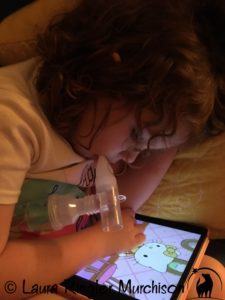

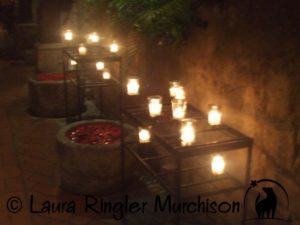
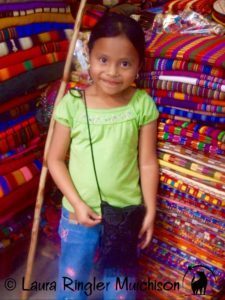

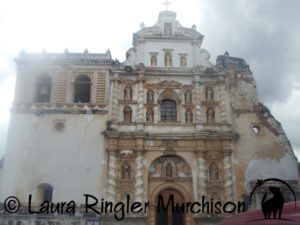
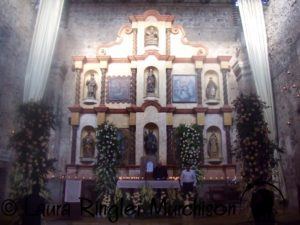
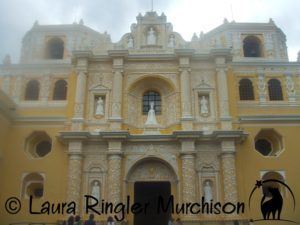
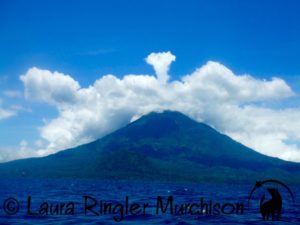

Recent Comments